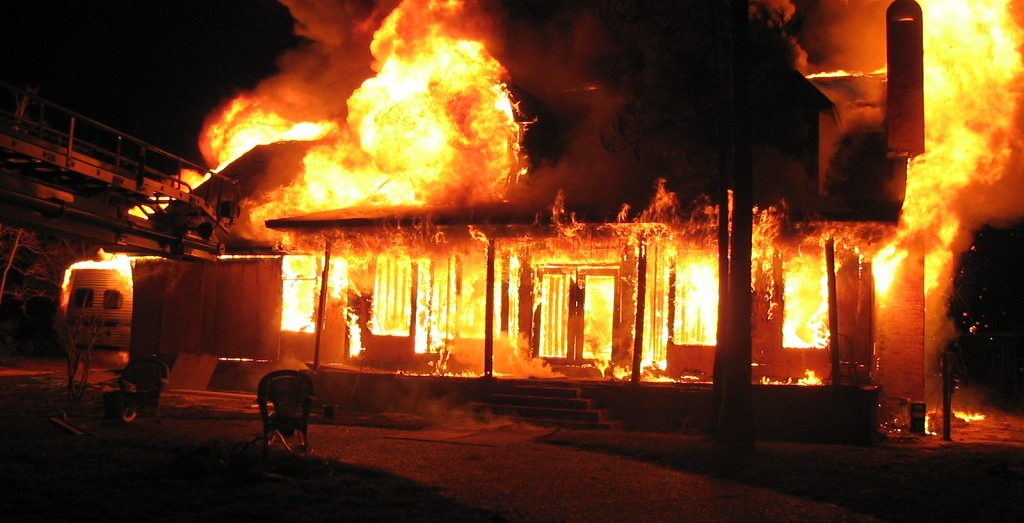Home Safety
"Home Sweet Home"! We all know the saying, and we all know the feeling, too. Home is where we gather with loved ones; it's where we eat, sleep, and relax in comfort and safety - the one place where we can let down our guard.

Or can we? According to the National Safety Council's 1995 edition of Accident Facts, last year, seven million Americans suffered disabling injuries and another 26,700 died as the result of injuries sustained at home. How can you be sure that your home is the safe, sweet haven that you want it to be? Lowe's Home Safety Council and the National Safety Council offer the following checklist of twenty safety items that no home should be without. For every item that you can check "Yes", you are decreasing the risk that someone you love will suffer a home injury or fatality.
Does Your Home Have...
- Smoke Detectors
Most home fire deaths happen between 10 p.m. and 6 a.m. Many deaths are caused by smoke and toxic gases, not the fire itself. Install smoke detectors on every level of your home, including the basement and workshop, and especially near sleeping areas. For extra protection, consider installing a smoke detector in every bedroom. Be sure to test batteries at least once a month and never remove the batteries from your smoke detector except to replace them. - Carbon Monoxide Detector
Because CO is odorless, colorless, and tasteless, it often goes undetected. Carbon monoxide is a normal by-product of combustion. Therefore, any fuel burning appliance in your home is a potential CO source. Every home should have at least one CO detector placed in an area near sleeping rooms. Be sure your detector displays the Underwriters Laboratories (UL 2034) label. - Ground-Fault Circuit Interrupters
A ground-fault circuit interrupter (GFCI) is an electronic device that helps protect you from serious injury by monitoring the electricity flowing in the circuit. If an imbalance occurs, the Ground-Fault Circuit Interrupter will almost instantly shut-off the current flowing through the circuit. A GFCI is essential in circuits to bathrooms, laundry facilities, kitchens, swimming pools, and outdoor receptacles. Test the GFCI monthly by pressing the test button and then the reset button to see that it is operating properly. - Fire Extinguishers
A multi-purpose dry chemical Class ABC fire extinguisher is the best choice for general home use. Mount the extinguisher on a bracket on the wall near an exit so that anyone using it can escape from the room if a fire spreads. All occupants of the home must know when and how to use the extinguisher properly. - Emergency Evacuation Plan
Make your plan now, before you need it. Have at least two exits from every room, and include all occupants of the home in practicing the plan. - Flashlights
Make sure the batteries are functional or use flashlights with built-in, rechargeable batteries. Keep the flashlights readily accessible at bedsides and in the basement. - First Aid Kit
Keep a well stocked first aid kit (including ipecac syrup) in your home. Make sure everyone knows where to find it and how and when to use the items in it. - List of Emergency Phone Numbers
Post a list of emergency numbers including police, fire, doctors, and poison prevention centers at every telephone in the home. In the event of an emergency, time is of the essence and even a very young child can phone for help if the number is available. - Tagged Shutoffs
Place tags on your home shut-off valves for gas, oil, and water, and the main shut-off for your electrical supply. Know how to safely turn off these services to your home in the event of an emergency. - Safety Glazing
Shower doors, patio doors, window walls, or any other large glass panel in your home should be made with safety glazing materials (safety glass). Look for a permanent mark in the lower corner showing the manufacturer's name, type of safety glass, and thickness. - Tested Appliances
All electric and gas appliances in your home should carry the Underwriters Laboratories (UL), Canadian Standards Association (CSA), or American Gas Association (AGA) designation. - Survival Kit
Every home is vulnerable to acts of nature. To prepare yourself for an unexpected disaster, such as a hurricane, power outage, tornado, or earthquake, keep a survival kit available. Your kit should include such items as tools, a battery operated radio and flashlight, clothing and bedding, containers of water, non-perishable food, and a first aid kit. To get a complete list of what should be in a survival kit, contact your local emergency management office.
Homes Where Children Live Or Visit Need Special Consideration. They Should Have...
- A lockable, "child-proof" section for every medicine cabinet.
- Locking cabinets for matches, lighters, flammable liquids, potentially poisonous household cleaners, garden pesticides, auto chemicals, pool cleaners, etc.
- Plastic safety caps to cover any unused electrical outlets, cabinet locks for kitchen, hobby areas, and bath vanities.
- Child safety gates at the top and bottom of stairwells.
- A metal fire screen that completely covers the fireplace.
- Spout guards and a mixer faucet for hot and cold bathtub water faucets.
- Edge guards for sharp-edged furniture and fireplace hearths.
- Protective surfacing under and around all outdoor playground equipment.
Homes With Swimming Pools Should Have...
- A four foot fence with a self-closing, self-latching gate.
- Life preservers.
- Rescue equipment.
- A lockable cabinet for pool chemical storage.
- A poolside telephone.
This checklist is not all-inclusive. Your home's age and design, amenities (whirlpool tubs, fireplaces, and decks) and the physical condition of your home's occupants, may all dictate additional safety provisions. Customize your safety measures to meet those special needs.
Inspect your home regularly. Read warning labels and user manuals, and file them where they can be found quickly.
